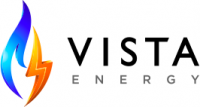How is Electricity Made?
Learn the Processes for Generating the Power Used in Your Home
For most of us, we just assume that electricity just works – kinda like magic. The lights come on when we flip a light switch. The television comes on when we push a button. Your smartphone charges when you plug it into the wall.
The thinking of the average consumer goes something like this: you pay your bill each month to ensure the electricity is always on, and if it’s not, then that’s a big problem someone should solve immediately. That’s an understandable attitude! You’re not the energy company. You literally pay someone else every single month to take care of this for you.
Since we think a little education never hurt anyone, we wanted to pull back the curtain a bit to share some of the bigger picture concepts at the heart of the energy industry. With a better understanding of how everything works, you can better appreciate the power you use throughout life.
How is Electricity Generated? – The Short Answer
Here’s electricity in a nutshell:
- A fuel source produces heat.
- The heat boils water.
- The water turns to steam.
- Pressure is applied to the steam.
- The high-pressure steam spins a turbine in a generator.
- The spinning turbine interacts with magnets in that generator.
- Electricity!
We’ve been using the same basic technology to create electricity ever since Michael Faraday started experimenting with loops of wire and copper back in the 1820s. It’s all about spinning that turbine.
How is Electricity Generated? – The Long Answer
The long answer to the question driving this blog post entails parsing the nuances between the different fuel sources used in the creation of electricity. You could even declare that the spinning of the turbine in relation to the magnets in the generator is more important than the fuel source used to create the spinning.
According to a 2018 report from the International Energy Agency, there are 6 primary fuel sources used in the generation of electricity:
- Coal – 38.4%
- Natural Gas – 23.2%
- Hydro – 16.3%
- Nuclear Fission – 10.4%
- Oil – 3.7%
- Non-hydro renewables – 8%
Depending upon the fuel source in question, electricity generators employ a variety of methods to get those turbines spinning.
- Substances like coal, natural gas, oil, and biomass are burned to heat water until it becomes steam.
- With hydro, water literally falls from the tops of dams and waterfalls to spin turbines.
- With nuclear fission, atoms are smashed together to generate heat.
When you start to parse the differences between the various renewable energy sources, that’s where things get interesting:
- Wind energy literally uses the breeze to spin the turbines that generate electricity.
- Geothermal energy uses the steam already in the earth to spin turbines.
- Solar energy uses solar panels to collect sunlight that’s then sent through photovoltaic cells to create electricity.
Whether you’re investing in clean coal, pursuing solely renewable methods, or exploring an array of options, electricity generation is still all about turning turbines – almost 200 years later.
Have Questions? Call Us!
Our representatives are waiting to help you Mon - Fri 7:00 am to 6:00 pm CST
Sat 10:00 am to 3:00 pm CST
